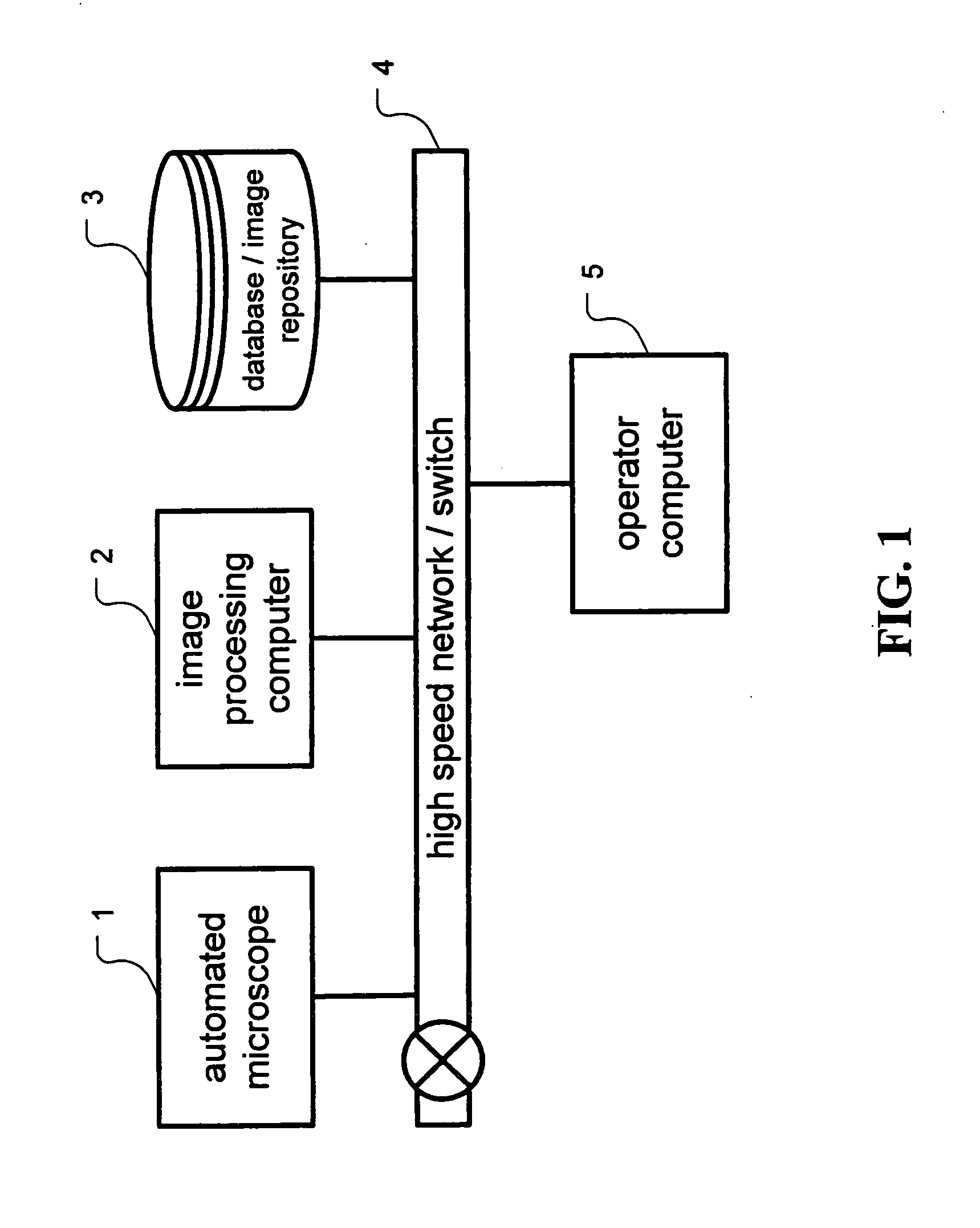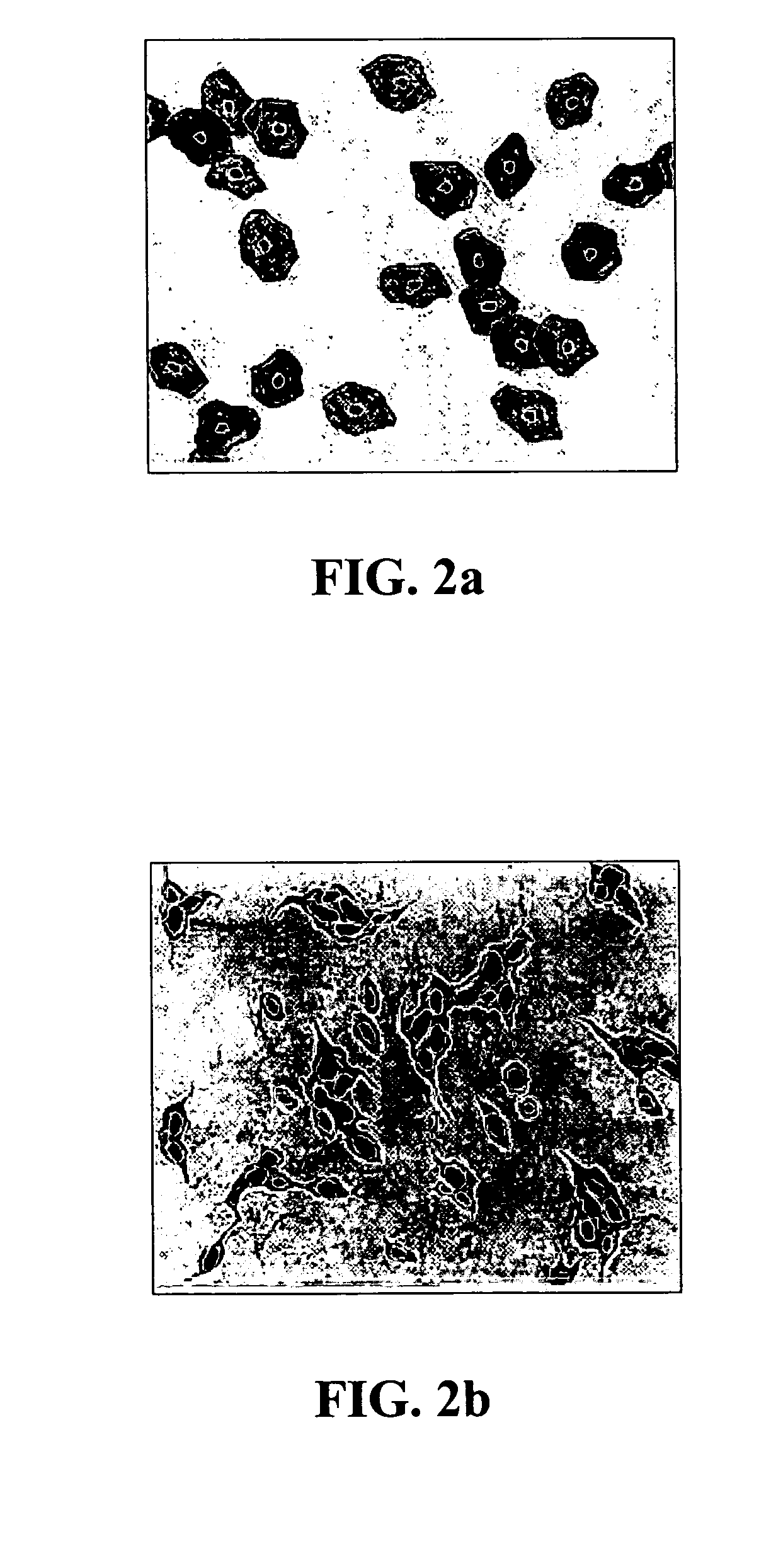Method and apparatus for automated analysis of biological specimen
a biological specimen and automatic classification technology, applied in biochemistry apparatus and processes, image data processing, material testing goods, etc., can solve the problems of computational difficulty in processing large-scale agglomeration of cells, independent analysis of objects, etc., and achieve the effect of improving the recognition accuracy
- Summary
- Abstract
- Description
- Claims
- Application Information
AI Technical Summary
Benefits of technology
Problems solved by technology
Method used
Image
Examples
hardware implementation example
[0120] In a preferred embodiment of the embodiment of the invention shown in FIG. 1, the scanning microscope 1 is an Aperio ScanScope T2 supplied by Aperio Technologies, Vista, Calif., USA, and the computer 2 is a dual processor server running a Microsoft Windows operating system. The scanning microscope and the computer are interconnected using a Gigabit Ethernet. The parallelisation of image recognition is implemented by means of Windows multithreading. The image repository 3 is a Redundant Array of Independent Disks (RAID) connected to the computer 2.
[0121] Referring now to FIG. 12 there is illustrated, in schematic form, an apparatus 20 for putting the image processor computer 2 of FIG. 1 into effect. An image 22 of biological objects such as cells is passed to a segmentor 24 which seeks to identify separate objects, for example as discussed above and as illustrated by segmented image 26. The segmented image, or data relating to the segments is passed to analyser 28 which ident...
PUM
 Login to View More
Login to View More Abstract
Description
Claims
Application Information
 Login to View More
Login to View More - R&D
- Intellectual Property
- Life Sciences
- Materials
- Tech Scout
- Unparalleled Data Quality
- Higher Quality Content
- 60% Fewer Hallucinations
Browse by: Latest US Patents, China's latest patents, Technical Efficacy Thesaurus, Application Domain, Technology Topic, Popular Technical Reports.
© 2025 PatSnap. All rights reserved.Legal|Privacy policy|Modern Slavery Act Transparency Statement|Sitemap|About US| Contact US: help@patsnap.com



